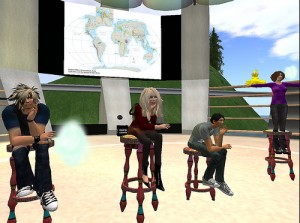- Infrastructure for on-demand learning via video presentations and online group lessons.
- Standing desks with stools or high seating
- Individual desks combined with group working areas
- Classrooms with 15 to 20 cubicles similar to Hollywood Squares crammed with technology that communicates with the teacher.
- Couches in the classrooms to allow for more informal discussions.
- Desks with connections to restricted set of online resources.
- Use headgear to enter 4D virtual reality, for example when studying astronomy or geography.
But what's resonated more with me are some of the responses about how the learning process would change. One commenter says:
"By combining access to digital resources with a 'coach,' the student can access 'facts' that were formerly taught by teachers. In this space, teachers stop being "the provider" and start being a guide - a curator of relevant digital resources. Class wikis, blogs and online calendars make this easy for the teacher and convenient for the student."
Another writes about using the community as classroom, including museums and workplaces.
"All students would have a home base, preferably around a discussion table, with non-florescent lighting, and lots of computers, board games, art supplies and tons of books in every room."
On Joanne Jacobs' blog, EB mentions how technology can help with differentiated learning.
"We are starting to realize that children learn better and faster if they are learning in their zones of proximal development, which can only be done in a classroom of 25 K-3 children if their practice is automated at some level."
Perlstein's article also addresses this:
"In places where schools have moved away from the idea of teachers as sole practitioners, away from the science-then-reading-then-math-then-social-studies way of breaking up the day, and away from treating students as a mass toward treating them as individuals, some innovative classrooms have emerged. Architects have begun to toss out the usual set of spaces--classroom, cafeteria, auditorium, gym, hallway--for more flexible layouts."
I'll be following the progression and report back.


